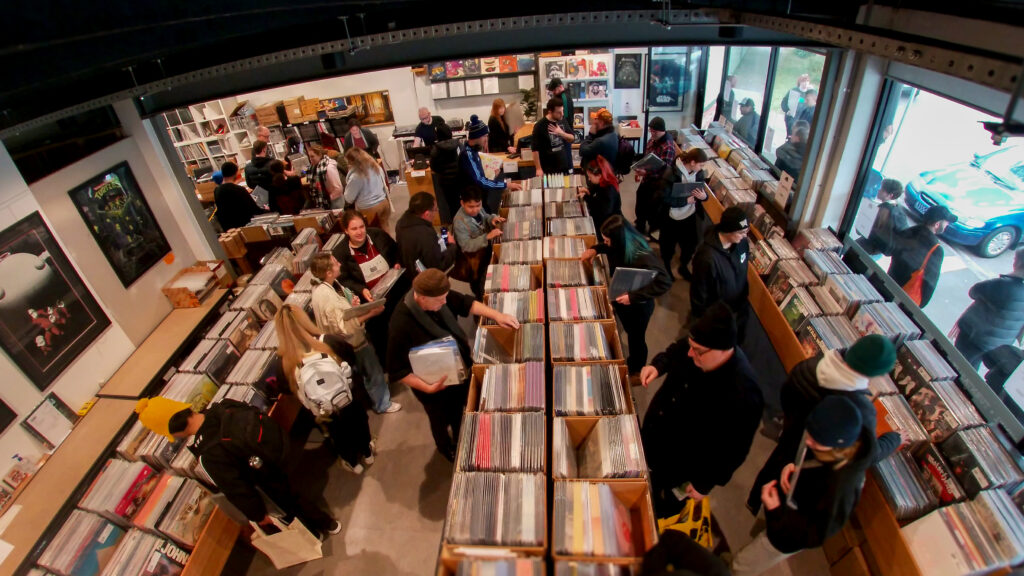With a discography that would exhaust the most serious of collectors, Thee Oh Sees have created the kind of revered mythology that is becoming all too elusive in rock and roll these days. Fans wait on bated breath for their next release, and the band keeps those very fans constantly guessing what said release will sound like. Not only is it impossible to keep up with the San Francisco four-piece, it’s impossible to pigeonhole them. While Castlemania, their first full length from 2011 was an expansive and at times mysterious listen, Carrion Crawler/The Dream, (Out on legendary garage rock label In the Red) their latest, is a thriving, punishing listen that while not always straight forward, hits the mark early and often.
One could be easily bewildered as to how the band maintains this kind of sonic output. But for Brigid Dawson, the band’s longstanding vocalist/keyboardist, the reasoning is quite simple. Reached on the phone from her San Francisco home, Dawson gives insight into the band’s recording techniques between sips of wine.
“It’s easy because our recording process is really quite simple. We record almost everything live; the last time we went into the studio [to record Carrion Crawler], we were there for five days. And that was the longest we’d ever spent in the studio.”
To hear Dawson say it, you’d think Thee Oh Sees could essentially release a new record every single day of the year. There’s more to the band than their simplistic recording techniques. There still exists an energy within the band to create, release and repeat. Though every Thee Oh Sees release paints a varied sonic landscape, Dawson maintains the key to their songs is not how they’re recorded so much as when they’re recorded. For Dawson and Thee Oh Sees, timing is everything.
“[Lead singer/guitarist] John [Dwyer] does a lot of home recordings that he puts out. Sometimes we’ll come down and put our touches on it. But otherwise, we play a lot, we tour a lot and we try to write songs in between everything. And we’ve always believed that the best way to record a song is when its fresh. We’re happy to put it out like that too. I don’t know if there’s necessarily a drive within the band; we’re just documenting things as we go along.”
Now documenting for close to 14 years, Thee Oh Sees have allowed their sound to move free of constrictions, in any manner they see fit. It is indeed easy to lump the band in with other garage rock acts, but compared to their contemporaries, Thee Oh Sees are a rather fearless bunch. No strangers to experimenting with their songs, the band places no value in writing simple songs or strictly adhering to how songs were recorded when playing them live.
Dawson maintains that while John Dwyer may be the leader and principal songwriter for Thee Oh Sees, the entire band has the opportunity to put their own stamp on the songs. It’s up to all four members of Thee Oh Sees to give the song wings, and see where it will go.
“Usually John will bring in an idea and we’ll practice it, but by the end it can sound very different from the original. We also leave a lot of room in the songs to improvise. Some of the longer jams, they will sound different every time we play it live.”
Yet when asked if the band ever feels the need to mess with a song simply because of its simplistic nature, Dawson reverts back to her hands-off mentality.
“It just happens through a natural progression. Often some of the older songs will change once we’ve toured with them for awhile. A lot of the times it just happens bit by bit. It must seem like we’re making all these grand transitions, but we’re really not.”
While Dawson stays decidedly humble regarding how Thee Oh Sees operate, the band does deserve to be celebrated for their audacious aesthetic that is rarely overbearing. While the future for Thee Oh Sees appears to be something of an open book, the city which the band brought the band together is as important a part of their aesthetic as their recording process. San Francisco, long a hub for the creatively-inclined, provided the push on the swing. Where the band heads next, sonically speaking, is anyone’s guess.
“I came to San Francisco from London about ten years ago. If you can imagine the difference moving from this anonymous, impersonal city to San Francisco, where I met everyone in the band in the coffee shop I was working at, just making coffee. It’s amazing how easily you can get into the community. Within the art community here, we’re all very close. We sing on each other’s albums, play on each other’s albums, we go see each other play all the time and sometimes go on tour together. Maybe in a way, it’s because San Francisco is a little bit of a small town? Almost everyone who plays music here has come from another place. So there’s definitely something that draws people here. Maybe it’s because people can pursue their dreams here. It’s allowed. People don’t think you’re strange.”







